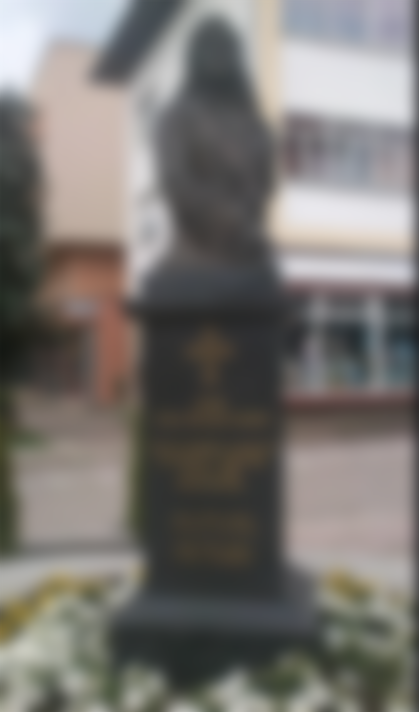The name of Sava Vladislavić Raguzinski is mostly forgotten by the Serbian people today. Rarely has anyone heard of the existence of this man, let alone knows anything more about him. And it is a pity, first of all, because he is one of the most important Serbs at the end of the 17th and the beginning of the 18th century, who took the glory of his name far… even to the mighty tsarist Russia and Peter the Great.

Sava Vladislavić Raguzinski or "Count Raguzinski" or "Illyrian" as he was still known, was a Serbian politician, diplomat, travel writer, polyglot, great benefactor and donor of the monastery, but he is certainly best known in history as an advisor to the Russian Tsar Peter the Great. He was born at the beginning of 1669 and was of Herzegovinian origin from Jasenik near Gacko, where his father was a prince. He spent his early youth in Dubrovnik, where he acquired higher education, but also learned trade and seafaring. He began to gain power precisely as a merchant, moving to Constantinople. However, he very quickly tried his hand at diplomatic affairs, and probably also at espionage, which somehow went "hand in hand" at the time. Becoming close with Russian politicians who lived in Constantinople. It is alleged that he contributed to the conclusion of the Russo-Turkish peace in 1700, and that is exactly what opened the way for him to the court of Tsar Peter the Great. Only a few years later, he was one of the most powerful people in the Russian Empire.
A spy in the service of the crown!

Raguzinski arrived in Russia in 1702. He managed to rise high, to the position of advisor to the Russian emperor Peter the Great, since when in 1708 he received estates in today's Ukraine, as well as a castle in Moscow, on the river Pokrivna. Count Ilirski, as Sava sometimes signed, continued to trade. He first received the right of free trade from the emperor for ten years, and the charter was, shortly afterwards, extended indefinitely. However, the power of Count Raguzinski spread beyond the borders of trade. He is said to have been the founder of the Russian intelligence service, for which he received a large salary from Peter the Great. It was certainly a man of the emperor's greatest trust. It is known that from 1716 to 1722 he was the representative of Russia in the Vatican, where he prepared the concordat between Russia and the Vatican, took care of Russian nobles in Rome and purchased works of art for the summer palace of Peter the Great in St. Petersburg. In Venice, Sava married the Italian noblewoman Virgil Trevisan. The couple had three daughters who all unfortunately died in early childhood, which was a wound that never healed in the soul of Sava Raguzinski. Sava's closeness to the royal family continued even after the death of Peter the Great. He received the title of count from Empress Catherine on February 24, 1725, and in the same year he was her envoy to China, where his engagement led to the Kjahtin Agreement, the most important international agreement between Russia and China until the middle of the 19th century. Through him, the first Orthodox Church in Beijing was established, and due to the established relations with China, he was awarded the Order of Alexander Nevsky.
Remembering the homeland!
As the most prominent person in the Serbian emigration to Russia at the beginning of the 18th century, Sava Vladislavić Raguzinski and how he helped the position of the oppressed Balkan peoples at that time, at the Russian court. He drew the attention of a powerful statesman such as Peter the Great to the position of the Serbs, as well as to the help they could give to Russia when it comes to its influence in the Balkans. Apart from the state ones, this opened the spiritual doors of churches and monasteries throughout Russia for the Serbs, and the Sava became a link between all the South Slavs and the Russian Empire. Throughout his life, Sava helped Orthodox monasteries throughout the Balkans, primarily in his homeland. He is mentioned as a donor of the monastery Žitomislić, Tvrdoš, as well as Savina in Herceg Novi.
In the last years of his life, Count Raguzinski, on the very border with China, founded the present-day town of Kjahta, where he built the church of St. Sava of Serbia, Nemanjić. The city soon became one of the most important trade centers in all of Central Asia.
Sava Vladislavić Raguzinski; Serb, Russian, Herzegovinian; count, diplomat, polyglot, and merchant; the ancestor of Jovan Dučić, a benefactor of the ancestor of Alexander Pushkin, a friend of the Tolstoy family, a friend and closest associate of Tsar Peter the Great, died in 1738 in St. Petersburg. He was buried in that city, in the royal tomb in the crypt of the Church of the Annunciation.

Much is known about Count Raguzinski in Russia, and a considerable amount of historical material is dedicated to him, and in addition, Count Raguzinski is a frequent topic of discussion for many Russian contemporary historians. In a survey conducted about ten years ago at all Russian universities, students named Count Raguzinski, together with famous Russian rulers, military leaders, artists and scientists, on the list of the 100 most important people in the thousand-year history of the Russian state. And maybe that fact speaks best about that: who was, and what was Count Sava Vladislavić Raguzinski like !? Without a doubt, he was: a great Serb, a great Russian.


